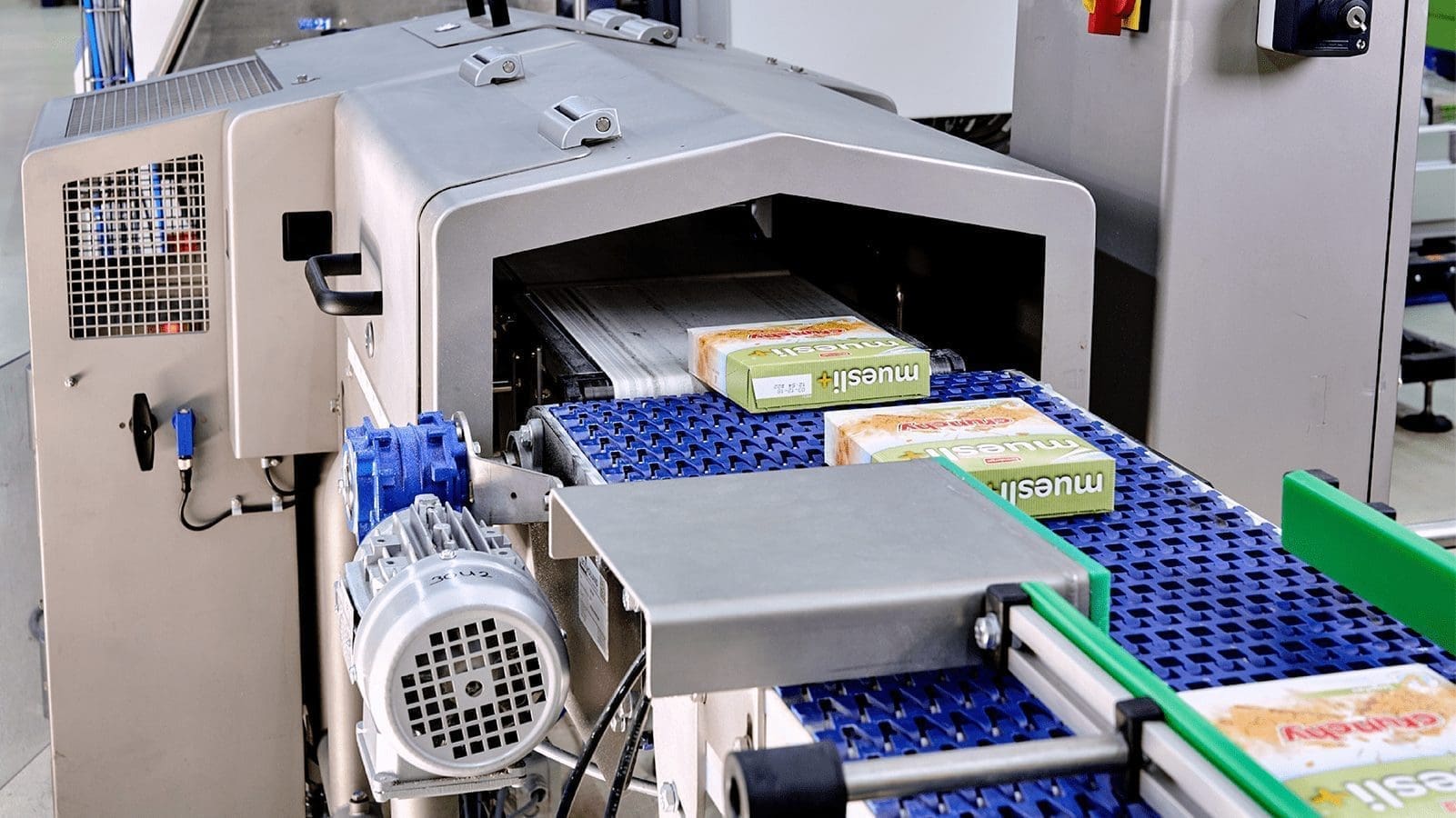Maintaining brand reputation is vital in competitive markets. This underlines the importance of an effective quality control process throughout the factory. Ishida’s versatile inspection and quality control equipment is a wise investment that will help ensure that consumer trust and confidence are never compromised.
Maintaining brand reputation is vital in competitive markets. It can take years for a food manufacturer to build a brand but just a single quality issue can seriously damage it, particularly if it is related to consumer safety. The financial implications can be immense too – from loss of sales to large retailer fines and the costs and logistics of a product recall, as well as the possibility of legal action.
Consumers are also more demanding and less willing to tolerate even the smallest lapse in quality; and the growth of social media has made it far easier for complaints to reach a large audience.
This underlines the vital importance of an effective quality control process throughout the factory. However, one of the challenges to achieving this is the increasing automation of the processing and packing operations, which itself is vital to maximise efficiencies and minimise costs. This leaves fewer opportunities for human intervention to spot problems on the line.
In terms of preventing foreign bodies in products, the versatility of X-ray inspection systems provides a major advantage through their ability to detect not just metal but also a wide variety of other items that are likely to cause a significant quality issue, such as glass, dense plastic, stone and rubber.
X-ray technology is very flexible in its ability to work undeterred in harsh conditions, such as humid and wet environments and extreme hot and cold temperatures. Foreign bodies can be detected through aluminium foil and tins, regardless of the temperature or the salt and water content of the product. X-ray machines can handle a variety of pack formats including top sealed and thermoformed trays and flexible bags as well as unpacked and bulk product.
Much of the focus on food quality and safety is aimed at the retail sector, so the priority is the safety of finished packs. The natural inclination is therefore to install an X-ray inspection system at the end of the line to inspect filled and sealed packs. Nevertheless, for some products, quality issues and considerations can be more complex, and this may mean that an X-ray machine will be more effective when placed further upstream.
The is particularly true for the packing of certain ‘high risk’ raw materials. Products such as nuts, seeds and pulses, dried fruit and fresh produce, harvested from the ground, have the potential to contain contaminants including stones, grit and broken or littered items. In addition, early inspection allows for traceability, with the possibility to discuss foreign body issues directly with suppliers. Due diligence obligations can then be met to improve quality and food safety and to ensure preventative measures are put in place at source.
Many types of ready meals can also present a challenge for inspection at the final stage. Usually, the product will involve a variety of ingredients and this can make it difficult to spot foreign bodies such as bones in fish fillets or pieces of meat. Earlier inspection of the ingredients will enable such contaminants to be more easily identified and will again minimise the implications of re-work and loss of product and packaging that would occur at a later inspection stage.
Nevertheless, one consequence of any earlier bulk inspection of product is that during subsequent processing and packing, there is still the danger that additional foreign bodies could enter the product. This may require a second inspection point once the pack has been fully sealed. Importantly, this will provide a final inspection before packs leave the factory and is usually the preferred option for retailers.
The overall size of a product or pack is important in determining the choice of X-ray inspection system. At Ishida, for example, our range of models includes one with a chamber height of up to 390mm, able to handle large size items such as 25kg blocks of cheese or butter. Machines are also available to handle taller pack formats, such as bottles and cartons or crates. As well as foreign bodies, they can check for the correct fill level and that the closure or lid is in place.
Different models have different levels of sensitivity. Cost-effective entry level systems, such as our IX-EN range, are able to detect foreign bodies with a reasonably high density. Softer or less dense items like glass or rubbers will require machines with greater sensitivity, such as our IX-GN range. Specialist models can detect bones and bone fragments in meat fillets.
Ishida X-ray inspection systems incorporate genetic algorithm software that is able to analyse image data over a number of generations to achieve an extremely high level of accuracy. Since many applications will require the detection of similar foreign bodies, the system can be optimised to look for these objects and help to eliminate recurring sources of contamination.
Choosing the most appropriate inspection and quality control equipment is a wise investment that will help ensure that consumer trust and confidence are never compromised
David Mulwa
Tweet
Another food safety and quality issue concerns the importance of ensuring the integrity of the final retail pack. Any leaks in sealed packs of meat, poultry or fish can quickly lead to product deterioration but such imperfections cannot usually be detected by the naked eye.
To prevent this, seal testers are able to test the integrity of sealed, flow-wrapped or lidded trays in different materials and sizes. Typically, they apply controlled pressure to each pack going across a conveyor in order to detect and evaluate any subsequent ‘give’.
A major benefit of the process is that the testing process is very gentle, meaning failed pack contents can be re-packed. In addition, as well as detecting significant leakages, the system can pick up any trends that give an early warning of deterioration in the sealing process.
New technologies are also being developed to meet the challenges of other pack formats, such as bags and pouches, which have traditionally been more difficult to monitor. Latest advanced laser technology, such as that used in our Ishida AirScan system, is now able to identify leaks of CO2 from holes as small as 0.25mm in MAP (Modified Atmosphere Packaging) packs in-line and at high speeds (up to 180 ppm), ensuring consistent seal integrity without compromising on throughput.
Accurate labelling is also vital as part of a comprehensive quality monitoring process. Vision systems can both ensure that a label is positioned correctly and verify the overprinted data with a company’s information systems to check that dates, weights, prices and barcodes are present, correct and legible.
An important benefit of both X-ray inspection and vision systems is that the results of these quality checks can be archived for evidence in the event of any subsequent problem or complaint.
Quality is also about delivering weight consistency. Checkweighers play a crucial role here, ensuring that every pack is within the required legal weight limit. This is again an important factor on automated lines, where there may not be personnel on hand to spot any problems, such as a tear in a pack or problems with a distribution or filling system that can affect a pack’s final weight. As part of this, checkweighers can also be combined and fully integrated with a metal detector.
At the same time, however well-designed and integrated an automated line may be, the fact that it is made up of different pieces of equipment means it is unlikely to operate consistently at its peak rate. There will always be slight variations or occasional hold-ups at some point which may affect its overall performance. The ability to spot unplanned downtime and be able to react as quickly as possible therefore becomes the critical factor in delivering the highest level of efficiencies.
This is where the checkweigher can make a vital contribution. Many of today’s models have the software capability to provide a huge amount of valuable information that enables companies to take instant action to improve the performance or efficiency of their lines, so much so that payback on this investment can be extremely fast.
Significantly, this data is instantly available and accessible – it does not require the information to be downloaded and then manually assessed in order for a report to be compiled. The information can even be delivered remotely, allowing data to be quickly compiled and compared between different lines, even at different locations.
The data can also suggest production improvements. For example, information on overweight products could highlight that a chocolate bar is consistently 2g over the required weight. This may be caused by the enrober putting too much chocolate on each bar. For a ready meal or a bag of mixed nuts, the same overweight each time might identify a particular ingredient that is being added in too high numbers.
In this way, the software plays a valuable role in assessing a packing line’s Overall Equipment Effectiveness (OEE) by constantly monitoring it in terms of availability, performance and quality in order to identify potential areas of improvement.
Brand reputation is hard won but all-too-easily lost. Choosing the most appropriate inspection and quality control equipment is a wise investment that will help ensure that consumer trust and confidence are never compromised, as well as contributing to enhanced efficiencies throughout the line.
This feature appeared in the July/August 2021 issue of Food Business Africa. You can read the magazine HERE








